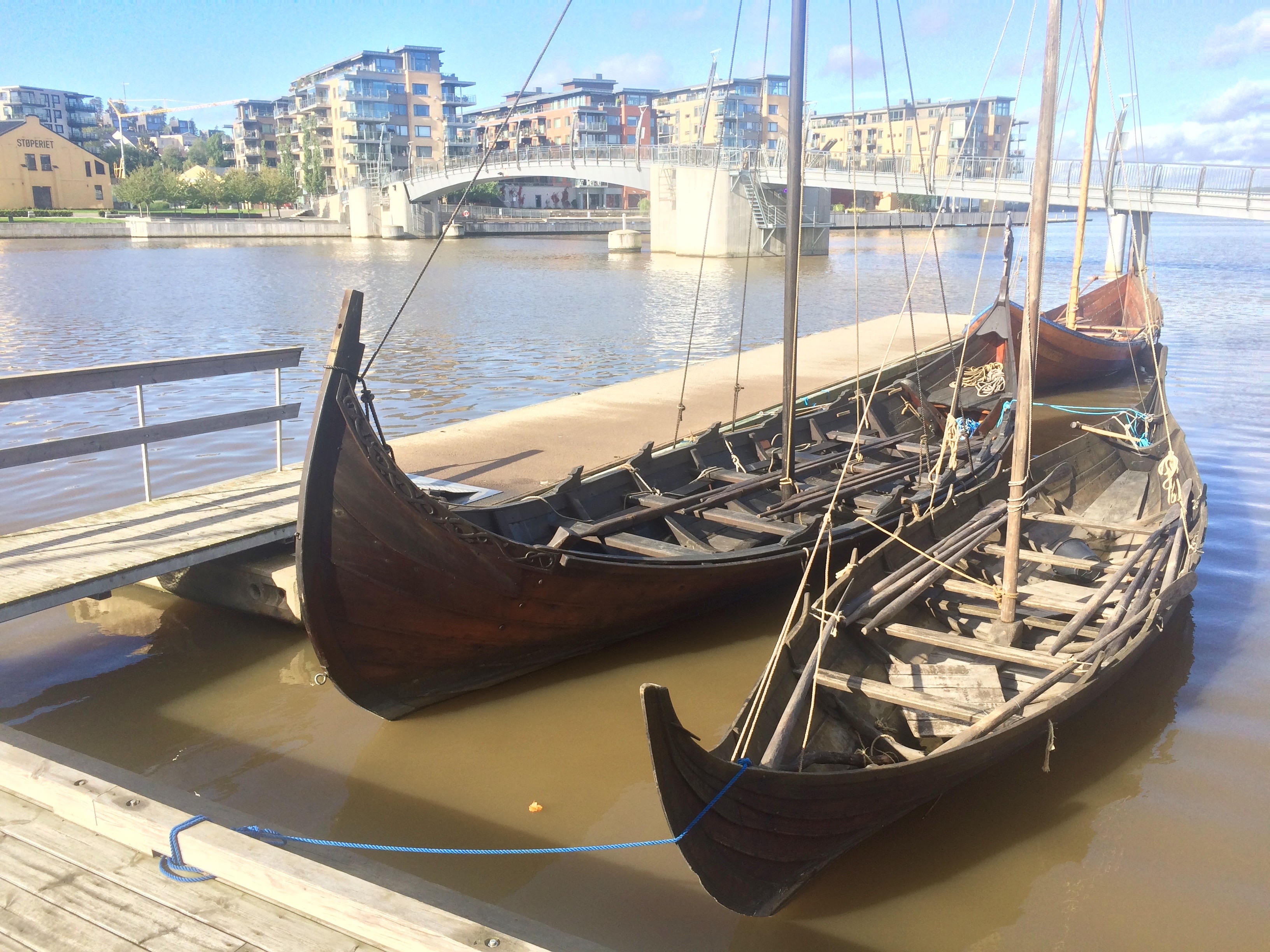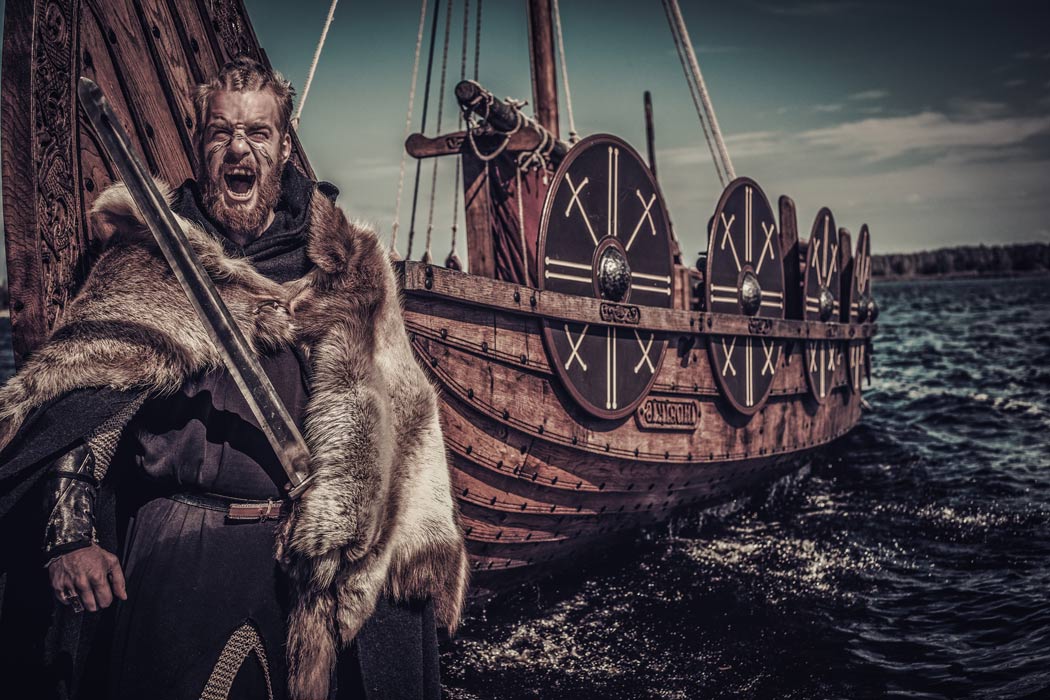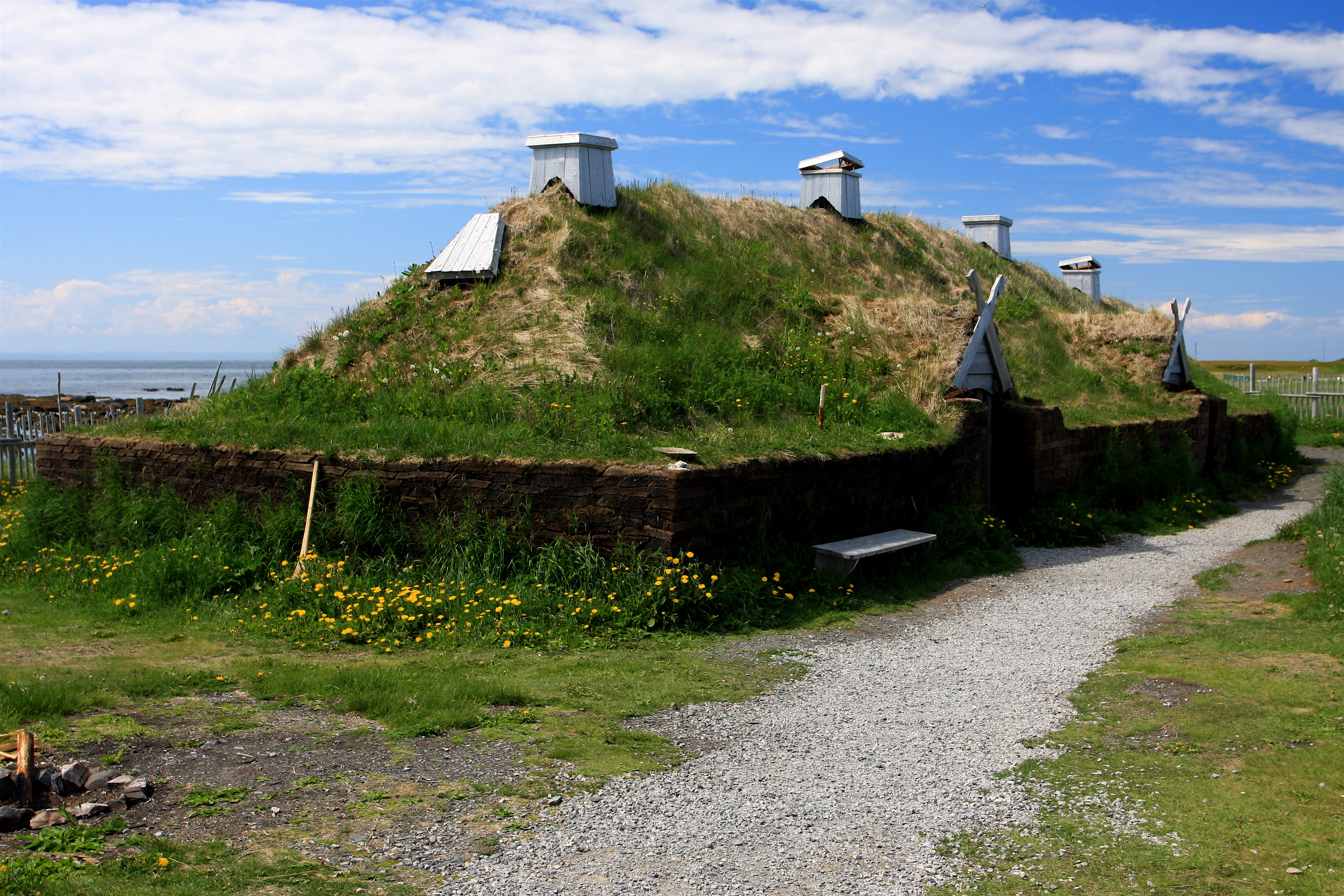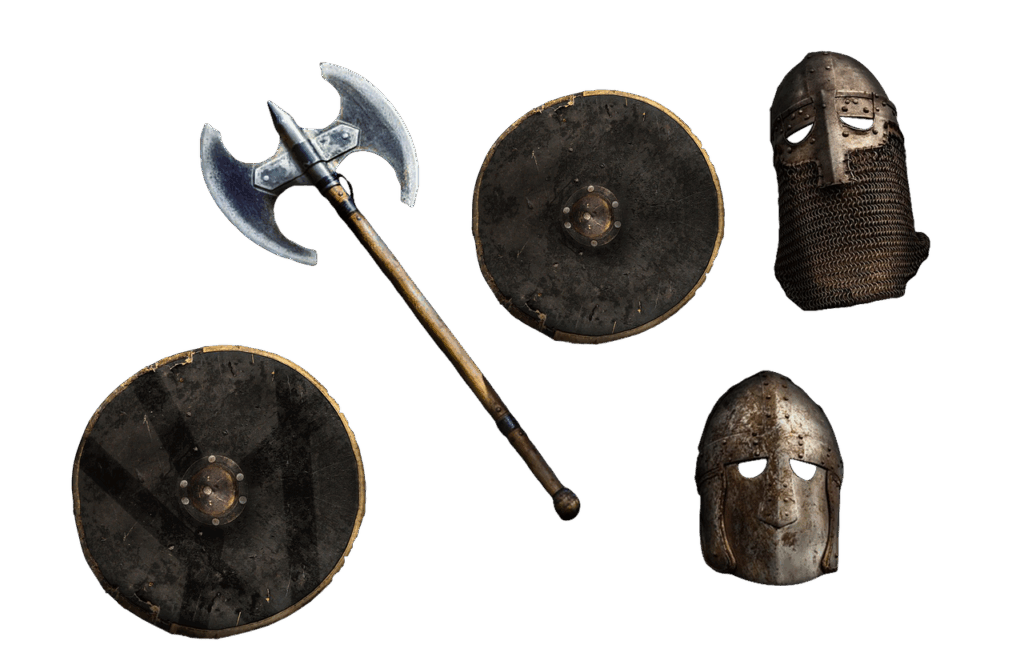
The image of the Viking, often conjuring horned helmets and relentless raiding, has long dominated popular imagination. Yet, beneath these sensationalized portrayals lies a far more complex and advanced civilization of Norsemen, whose indelible mark on early medieval history stretched across continents and oceans. These intrepid seafarers were not merely pirates; they were expert navigators, skilled traders, pioneering explorers, and remarkably adaptable settlers who fundamentally reshaped the world they encountered. Their voyages profoundly impacted the political, social, and even linguistic landscapes of diverse regions, from the bustling trade routes of the Middle East to the remote, icy frontiers of the North Atlantic.
Indeed, the Norse people, originating from what is present-day Denmark, Norway, and Sweden, embarked on an extraordinary period of expansion that spanned from the late 8th to the late 11th centuries. This era, famously known as the Viking Age, saw them venture further than any Europeans before them, establishing intricate networks of trade, daring raids, and, crucially, enduring settlements. Their ability to navigate treacherous seas and establish footholds in challenging environments, including the vast expanses of the Arctic and North America, stands as a testament to their ingenuity and resilience. It is through the remnants of these distant outposts and the rich archaeological record that we truly begin to grasp the full extent of their sophisticated civilization and the incredible stories they left behind.
Join us on an enlightening journey as we explore the foundational elements of Viking life and the remarkable spread of their culture across the globe. We will delve into their unparalleled seafaring prowess, trace their earliest settlements in the British Isles, uncover the resilient Norse communities that thrived on the Atlantic islands, and ultimately, embark on the legendary voyage that brought them to the shores of North America, centuries before any other European explorers. This deep dive aims to illuminate the often-overlooked aspects of their settlement patterns and the enduring legacy they forged in some of the most remote corners of the medieval world.

1. **The Seafaring Prowess and Scandinavian Homelands of the Vikings**The Vikings, a seafaring people with deep roots in Scandinavia, hailed from the lands we now know as Denmark, Norway, and Sweden. Far from being a monolithic group, these Norse seafarers were a diverse collective of merchants, raiders, traders, and ultimately, settlers. Their distinctive longships, masterpieces of maritime engineering, were instrumental in their success, allowing them to traverse vast distances with speed and agility, venturing far beyond their traditional homelands.
This pivotal period of activity, spanning from the late 8th to the late 11th centuries, is widely recognized as the Viking Age. During this time, the Vikings exerted a profound influence on the early medieval history of northern and Eastern Europe. Their impact was particularly significant in the political and social development of England, even leaving a lasting impression on the English language itself, and they were instrumental in establishing the embryo of Russia in Kievan Rus’. Within their countries of origin, these centuries also saw the gradual consolidation of smaller Norse kingdoms into the three larger entities of Denmark, Norway, and Sweden.
While popular conceptions often paint a picture of brutal, piratical heathens, archaeology and historical sources reveal a much more complex and advanced civilization. The Vikings spoke Old Norse and left intricate inscriptions in runes, a unique non-standardized alphabet. For much of the Viking Age, they adhered to the Old Norse religion, a rich tapestry of myths and gods, before gradually embracing Christianity between the 8th and 12th centuries. Beyond their voyages, most Vikings were also farmers, fishermen, craftsmen, and traders, highlighting the multifaceted nature of their society, which often differs greatly from the romanticized, and often inaccurate, portrayals of modern culture, such as the myth of horned helmets.

2. **Viking Age Expansion: Charting the Global Reach of Norsemen**The Viking Age was characterized by an astonishing breadth of voyages that saw Norsemen reach far-flung corners of the world. They sailed as far south as the Mediterranean, explored the coasts of North Africa, ventured into the Middle East, and pushed westward to Greenland and eventually Vinland, which is present-day Newfoundland in Canada, North America. This remarkable expansion cemented their place in history as the first Europeans to set foot on the North American continent, a testament to their unparalleled navigational skills and exploratory spirit.
Geographically, the influence of the Viking Age extended well beyond the Scandinavian homelands. It encompassed territories under North Germanic dominance, most notably the Danelaw in England, which included significant administrative centers like Scandinavian York, along with parts of Mercia and East Anglia. These areas became deeply integrated into the Norse sphere of influence, demonstrating the Vikings’ capacity not just for raiding, but for establishing effective governance and cultural exchange.
Their navigators were true pioneers, opening new sea routes that led to the foundation of independent settlements across the North Atlantic and beyond. This expansion resulted in established Norse communities in the Shetland, Orkney, and Faroe Islands, as well as in Iceland and Greenland. Most famously, they created a short-lived settlement at L’Anse aux Meadows in Newfoundland around the year 1000, forever changing the timeline of transoceanic European contact.
The Vikings also demonstrated a remarkable presence in Eastern Europe and the Byzantine Empire. Expert sailors and navigators, a group of Rus Vikings, known as Varangians, served as bodyguards for the Byzantine emperor, even attacking Constantinople at one point. Their voyages extended to the Caspian Sea and Arabia, highlighting a trading network that connected distant parts of Europe with the Islamic world. While spreading Norse culture to foreign lands, they simultaneously brought back slaves, concubines, and foreign cultural influences to Scandinavia, profoundly impacting their own genetic and historical development.
3. **Norse Settlements in the British Isles: A Lasting Impact**The British Isles became a significant destination for Viking expansion, leading to the establishment of numerous Norse settlements and distinctive forms of governance. These settlements had a profound and enduring impact on the political and social development of England, reshaping its early medieval landscape. The Vikings’ presence introduced new administrative practices, legal traditions, and even influenced the English language, with many common words still stemming from Old Norse.
A key region reflecting this dominance was the Danelaw, a territory in England where Danish law held sway. This area included important centers such as Scandinavian York, which served as a crucial administrative hub for the remnants of the Kingdom of Northumbria. The influence also spread to parts of Mercia and East Anglia, where Norse cultural and political structures intertwined with existing Anglo-Saxon society, creating a rich cultural mosaic.
The legacy of Viking settlement in the British Isles extended well beyond the immediate Viking Age. The Normans, who eventually conquered England in 1066, were themselves descendants of Vikings who had been granted feudal overlordship of Normandy in the 10th century. This lineage ensured that Viking descendants continued to exert significant influence in northern Europe. Even figures like King Harold Godwinson, the last Anglo-Saxon king of England, could trace his ancestry back to Danish forebears, underscoring the deep intermingling of these cultures.
Moreover, the direct ascension of Viking kings to the English throne further illustrates their enduring power; Sweyn Forkbeard claimed the English throne in 1013, followed by his son Cnut the Great, who reigned from 1016 to 1035. This period saw Scandinavia, particularly Denmark, at the heart of a vast North Sea empire, with its rulers holding sway over England, highlighting the profound and multifaceted impact of Norse presence in the British Isles for centuries.
4. **Colonizing the Atlantic: Iceland, the Faroe Islands, and Greenland**Venturing into the wild and unforgiving North Atlantic, Viking navigators established a series of remarkable settlements on remote islands, pushing the boundaries of human habitation. These included the Shetland, Orkney, and Faroe Islands, where Norse communities took root and thrived, integrating into the local ecosystems and developing unique island cultures. These settlements were not merely temporary outposts but became long-term homes, demonstrating the Vikings’ unparalleled adaptability.
Perhaps one of the most significant colonizations was that of Iceland by Norwegian Vikings, commencing in the 9th century. This isolated island offered both challenges and opportunities, leading to the development of a unique Norse society. After the island became Christianized, accounts of its history were meticulously written down from the inhabitants’ perspective in the Icelandic sagas and chronicles after 1130, providing invaluable insights into Viking life, social structures, and their deep connection to the land and sea.
Further northwest, Erik the Red led the establishment of the Greenland settlement around 980 AD. This monumental undertaking occurred during the Medieval Warm Period, which likely made the harsh Arctic environment more hospitable for farming and settlement. Norse communities in Greenland, though isolated, maintained connections with their Scandinavian homelands, trading furs, tusks, and other valuable commodities. This settlement was a remarkable feat of endurance in one of the world’s most extreme climates.
However, the Greenland settlement’s existence was ultimately finite, succumbing by the mid-15th century. While various factors contributed to its demise, climate change is believed to have played a significant role, as the Medieval Warm Period gave way to a colder climate, making survival increasingly challenging. The stories of these Atlantic settlements — from their ambitious founding to their eventual struggles — offer a compelling narrative of human resilience, adaptation, and the powerful interplay between culture and environment in the Viking Age.

5. **The Enigmatic Shores of Vinland: Vikings in North America**In one of the most astonishing chapters of Viking exploration, Norse seafarers became the first Europeans to reach the shores of North America. This incredible feat of transatlantic voyaging led them to a land they named Vinland, a region generally identified with present-day Newfoundland in Canada. This discovery predated Christopher Columbus’s arrival by nearly five centuries, fundamentally altering our understanding of early transcontinental contact and the scope of medieval maritime capabilities.
The settlement in Vinland, specifically at L’Anse aux Meadows in Newfoundland, was not a permanent colonization but rather a short-lived venture established around the year 1000. It was led by figures such as Leif Erikson, the heir to Erik the Red, whose family had already pioneered the settlement of Greenland. This expansion into North America also occurred during the Medieval Warm Period, which may have facilitated their ability to sustain such a distant outpost, even temporarily.
Archaeological evidence from L’Anse aux Meadows has confirmed the presence of Norse structures and artifacts, providing tangible proof of their brief but significant presence. This settlement likely served as a base for exploring the surrounding rich natural resources, including timber and possibly grapes (hence ‘Vinland’ – Land of Wine or Land of Winberry). The encounters between the Norse and the Indigenous peoples of North America, known as Skraelings in the sagas, likely contributed to the eventual abandonment of the site.
While their time in Vinland was brief, the sheer audacity of this journey and the establishment of a European foothold in the New World is a monumental achievement. It underscores the Vikings’ relentless drive for exploration and discovery, showcasing a people who were not bound by the known limits of their time. Their voyages to Vinland represent the apex of their westward expansion, leaving behind an intriguing mystery and a testament to their enduring spirit of adventure on the global stage, forever linking Scandinavia to the North American continent.

6. **Eastern European Ventures: The Varangian Rus and Beyond**While the westward expansion of the Vikings often captures the most attention, their influence stretched profoundly eastward, shaping the nascent states and trade networks of Eastern Europe. Here, these expert sailors and navigators were known as Varangians, establishing critical trade routes along the Dnieper and Volga rivers. Their presence was not merely fleeting; they were instrumental in establishing the embryo of Russia in Kievan Rus’, a testament to their enduring capacity for governance and integration into diverse landscapes.
Indeed, some Rus Vikings ventured far beyond the traditional trade routes, pushing south into the heart of the Byzantine Empire. A formidable group of these Varangians served as elite bodyguards for the Byzantine emperor, a position of considerable prestige and influence. Remarkably, despite this service, their daring spirit led them to even attack the magnificent city of Constantinople at one point, showcasing their dual nature as both loyal mercenaries and formidable, independent forces.
Their voyages were not solely military or focused on settlement; they fostered an intricate trading network that connected distant parts of Europe with the Islamic world. Varangians voyaged to the Caspian Sea and Arabia, exchanging goods such as furs, tusks, and seal fat for boat sealant, alongside the grim trade of slaves. This extensive network not only spread Norse culture to foreign lands but also brought back invaluable foreign cultural influences to Scandinavia, profoundly impacting their own genetic and historical development through this rich intermingling of peoples and ideas.
Archaeological and linguistic evidence continues to shed light on the complex relationship between Viking and Slavic tribes, demonstrating that they were “closely linked, fighting one another, intermixing and trading.” Scandinavia itself became “a melting pot of Slavic and Scandinavian elements,” with goods transferred from Slavic areas. Intriguing findings, like a 10th-century grave in Denmark thought to be Viking but later suggested to belong to a Slav from modern-day Poland, underscore the depth of this interaction, along with marital ties between Scandinavian kings and Polish royalty.

7. **Dominance in the Baltic: From Hedeby to the Enigmatic Jomsborg**The Baltic Sea was another crucial arena for Viking influence, serving as both a highway for trade and a battleground for supremacy. Along its southern coast, the Norse established important trading ports such as Hedeby and Kaupang, which became bustling hubs of commerce and cultural exchange. These strategic locations allowed them to control vital sea lanes and solidify their presence, ensuring their economic power throughout the Viking Age. Their ability to secure these coastal regions was paramount to their continued expansion and prosperity.
To safeguard their realm, particularly against the fierce Saxon tribes to the south, the Danes undertook monumental defensive constructions. The massive Danevirke fortification, built in and around Hedeby, served as a formidable barrier, continuously expanded as fears of the burgeoning Carolingian Empire grew, especially after Charlemagne’s violent subduing and forced Christianization of the Saxons. This defense remained in use for centuries, highlighting its enduring strategic importance against encroaching continental powers.
A dramatic shift in Baltic power occurred when King Gudfred led the Vikings to destroy Reric, an Obotrite city on the southern Baltic coast, in 808 AD. This decisive action not only eliminated a rival trading center but also effectively transferred its merchants and traders to Hedeby, securing Viking supremacy in the Baltic Sea. This dominance facilitated their expansion into regions like Estonia, Latvia, and Lithuania, where they established various Norse settlements and exerted significant influence.
Within this tapestry of Baltic expansion, the semi-legendary stronghold of Jomsborg emerges as a particularly intriguing element. Situated on the southern coast of the Baltic (medieval Wendland, modern Pomerania), Jomsborg was said to be a Viking stronghold existing between the 960s and 1043, home to the famed Jomsvikings. While its exact location, or even its definitive existence, remains debated among scholars, it symbolizes the Vikings’ formidable power and capacity for organized military and naval operations in the strategic Baltic region.

8. **The Compelling Quest: Decoding the Motivations Behind Viking Expansion**The extraordinary breadth of Viking expansion, spanning continents and centuries, naturally prompts the question of what truly drove these intrepid Norsemen. The motives behind their relentless voyages—be they for trade, raids, settlement, or conquest—are a complex tapestry, a topic of much scholarly debate that moves beyond simplistic notions of mere plunder and adventure. Understanding these underlying forces reveals the multifaceted nature of Viking society.
One intriguing theory, expressed as early as the 11th century by historian Dudo of Saint-Quentin and revived by later scholars, suggests that a shortage of women in Scandinavia may have been a significant catalyst. As Adam of Bremen observed, rich and powerful Viking men often had many wives and concubines, potentially leading to a scarcity of available women for the average Viking male. This scenario, it is argued, might have compelled men to seek wealth and power abroad as a means to acquire suitable partners, a drive that could fuel risky, status-elevating expeditions. Evidence from sources like the Annals of Ulster, which record Vikings carrying off “a great number of women into captivity,” lends credence to this perspective.
Another significant, and often cited, motive is the violent expansion of Christianity under Charlemagne. Professor Rudolf Simek posits that “it is not a coincidence if the early Viking activity occurred during the reign of Charlemagne,” suggesting that the Frankish emperor’s aggressive policies, which forced Christianization upon pagans through “force and terror,” provoked resistance and a desire for revenge among the Vikings. This clash of cultures and religions, while not the sole cause, undeniably contributed to the heightened frequency and intensity of Viking raids during this tumultuous period.
Beyond these internal and religious pressures, the Vikings shrewdly exploited moments of political and military weakness in surrounding regions. Contrary to some assertions, while early raids predated Charlemagne, their scale and frequency exploded after his death when his vast empire fragmented, leaving many smaller, weaker entities vulnerable. England, for example, suffered from internal divisions, becoming an appealing target due to the proximity of its towns to the sea or navigable rivers. A notable lack of organized naval opposition across Western Europe further allowed Viking longships to travel freely, turning every opportunity into either a raid or a trade venture.
Economic factors also played a crucial role, particularly the decline in the profitability of older trade routes. The fall of the Western Roman Empire in the 5th century and the expansion of Islam in the 7th century had severely impacted trade between Western Europe and the rest of Eurasia, creating a vacuum and new opportunities. The slave trade, in particular, was an important part of the Viking economy, with many captives destined for Scandinavia or shipped east via routes like the “Highway of Slaves” to lucrative markets in Constantinople and Baghdad, providing a powerful economic incentive for their voyages.

9. **Voices from the Past: The Enduring Legacy of Old Norse Language and Sagas**To truly grasp the Viking Age, one must delve into the very fabric of their culture, particularly their rich oral traditions and the language that carried their stories through generations. Although the Vikings were largely a non-literate culture in the conventional sense, they possessed a unique alphabet—runor—which they masterfully inscribed on thousands of runestones and other artifacts. These inscriptions, alongside the epic sagas and poetic Eddas, provide invaluable windows into their world, reflecting their beliefs, heroic deeds, and daily lives.
It was in the isolated Viking colony of Iceland that an extraordinary vernacular literature blossomed, particularly from the 12th to 14th centuries. After the island’s Christianization, accounts of its history, traditions, and the adventures of the Viking Age were meticulously written down in the Icelandic sagas and chronicles. While a literal interpretation of these medieval prose narratives requires caution, they are replete with specific elements worthy of consideration, including the vast quantity of skaldic poetry, intricate family trees, and the ethical values that shaped Norse society.
The linguistic legacy of the Vikings extends far beyond these written traditions, profoundly influencing the English language and myriad place names across their former sphere of influence. Many common words in everyday English stem from Old Norse, revealing the intimate interactions between Vikings and the peoples of the British Isles. Place names such as Egilsay (“Eigil’s Island”), Ormskirk (“Orms Church”), York (“Horse Bay”), and Swansea (“Sveinn’s Isle”) stand as enduring linguistic monuments to their settlements and impact. In areas like the Shetland and Orkney Islands, Old Norse even completely replaced local languages, evolving into the now extinct Norn language.
Interestingly, while Old Norse left an indelible mark on Western European languages, its influence on the Slavic languages in Eastern European Viking settlements was minimal. It is speculated that the vast differences between the two language families, coupled with the Rus Vikings’ often more peaceful trading endeavors in these regions and their being numerically outnumbered, contributed to this limited linguistic exchange. Though some Norse names for rapids on the Dnieper existed, they have largely vanished from modern nomenclature, a stark contrast to their linguistic footprint in the West.
Read more about: Sami’s Journey: Unpacking the Incredible Transformations of Northern Europe’s Resilient Indigenous People

10. **Echoes in Stone and Earth: Unearthing Viking Runestones and Burial Practices**The physical remnants of Viking culture – from monumental runestones to elaborate burial sites – offer tangible proof of their existence and provide crucial insights that complement written and linguistic sources. Runestones, inscribed with the non-standardized runor alphabet, served not only as memorials to the dead but also as chronicles of their journeys, achievements, and social structures, offering a direct voice from the Viking Age itself, often recounting tales of their extensive expeditions across Europe and beyond.
Sweden boasts the largest concentration of these runic inscriptions, with between 1,700 and 2,500 stones, many from the 11th century, providing rich details on family lives and warfare. Notable examples include the England runestones, which document voyages to England, and the Ingvar Runestones, chronicling expeditions to the Middle East. Denmark, with its 250 runestones, includes the famous Jelling stones raised by King Gorm the Old and his son Harald Bluetooth, which celebrate conquests and the conversion of the Danes to Christianity, uniquely depicting both animal imagery and the crucified Jesus Christ.
Runestones are not confined to Scandinavia; their presence spans as far as Greenland and Istanbul. The Piraeus Lion, for instance, bears runic inscriptions telling of Viking warriors, most likely Varangians, serving the Byzantine emperor. Even more recently, the Kingittorsuaq Runestone in Greenland and Manx runestones on the Isle of Man attest to their widespread travels. A fascinating detail is the survival of runic usage by the isolated Elfdalians in Sweden until the 1920s, demonstrating the remarkable persistence of this ancient alphabet in certain cultural pockets.
The burial practices of the Vikings were as varied and revealing as their runic inscriptions, offering profound insights into their beliefs about the afterlife, social hierarchy, and material culture. Ranging from simple dug graves to magnificent tumuli and elaborate ship burials, these sites are rich archaeological treasure troves. Cremation was predominant in what is now Sweden, while burial was more common in Denmark, and both practices coexisted in Norway, reflecting regional customs and evolving beliefs during their transition from Old Norse religion to Christianity.
The items interred with the dead, ranging from weapons and tools to jewelry and even entire ships, provide crucial clues about what was deemed essential for the journey into the afterlife and the status of the deceased. Significant burial sites such as Oseberg and Gokstad in Norway, Jelling in Denmark, and the unique Salme ships in Estonia—the largest and earliest Viking ship burial ground ever uncovered—continue to reveal new knowledge about Viking Age circumstances, from their craftsmanship and military equipment to their religious practices and daily lives, painting an ever more complete and balanced picture of this complex civilization.
As we journey through the sagas and across the archaeological landscapes, it becomes undeniably clear that the Vikings were far more than the romanticized “barbarian warriors” of popular myth. They were a people of profound adaptability, unparalleled navigational skill, and deep cultural richness. Their epic voyages, driven by a complex mix of economic necessity, political ambition, and a thirst for new horizons, left an indelible mark across three continents. From the frozen reaches of the Arctic tundra, where a drone’s scan now confirms their forgotten settlements, to the bustling trade centers of the East, the echoes of their sophisticated civilization continue to resonate, inviting us to look closer and appreciate the true depth of their enduring legacy. Their story is a testament to human resilience, ingenuity, and the ceaseless pursuit of discovery in the face of the unknown, an epic tale that continues to unfold with every new discovery and every deeper understanding of their remarkable world.




